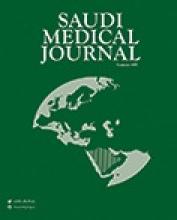Abstract
OBJECTIVE: To explore the roles of annexin II in breast cancer progression, and to study the effect of annexin II on breast cancer cell proliferation and invasion.
METHODS: This study was conducted in the Key Laboratory of Diagnostic Medicine Designated by the Ministry of Education, Chongqing Medical University, Chongqing, China from December 2006 to January 2009. First, we employed Western blot and reverse transcriptase polymerase chain reaction to detect the expression of annexin II and S100A10 in a panel of well-characterized human breast cancer cell lines, and investigated the localization of annexin II and S100A10 by use of immunofluorescence. We then silenced the expression of annexin II in MDA-MB-435s, which was found to over express annexin II, using the chemically-synthetic annexin II small interfering RNA (siRNA) duplexes (including 3 groups: blank MDA-MB-435s cells, cells transfected with negative control siRNA, and cells transfected with annexin II-siRNA). Finally, the cell proliferation, invasion, and plasmin generation were assayed, and the cellular levels of S100A10 and c-Myc were also detected. All the tests were repeated 3 times.
RESULTS: Annexin II and S100A10 were over expressed in invasive human breast cancer cell lines. The siRNA targeting annexin II of MDA-MB-435s cells did not only decrease annexin II messenger RNA and protein levels, but also down-regulated the levels of S100A10, and c-Myc. The treated cells were remarkably blocked in the G0/G1 phase, and cells in the S/G2+M phase decreased. Additionally, the treatment with siRNA resulted in reduction of plasmin generation as well as a loss of the invasive capacity of breast cancer cells.
CONCLUSION: Annexin II might be a key contributor to breast cancer proliferation and invasion.
- Copyright: © Saudi Medical Journal
This is an open-access article distributed under the terms of the Creative Commons Attribution-Noncommercial License (CC BY-NC), which permits unrestricted use, distribution, and reproduction in any medium, provided the original work is properly cited.






